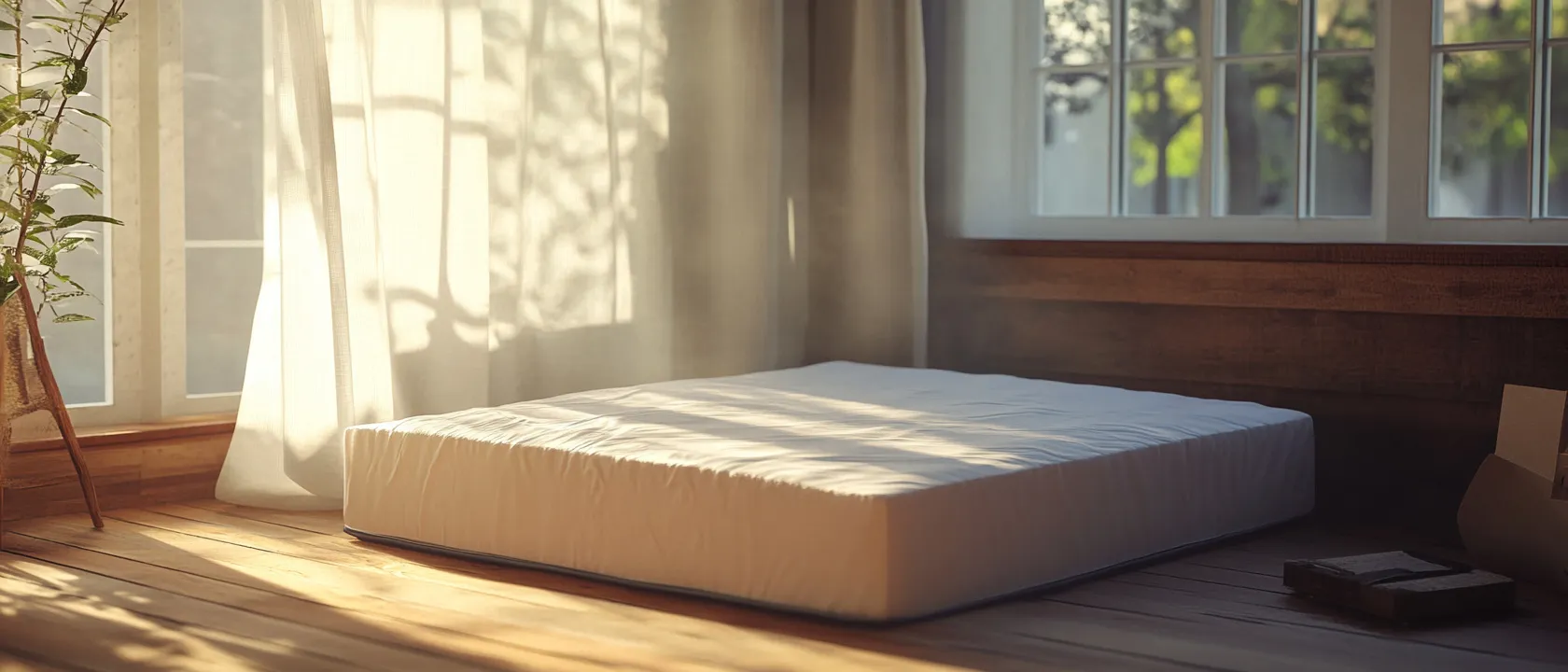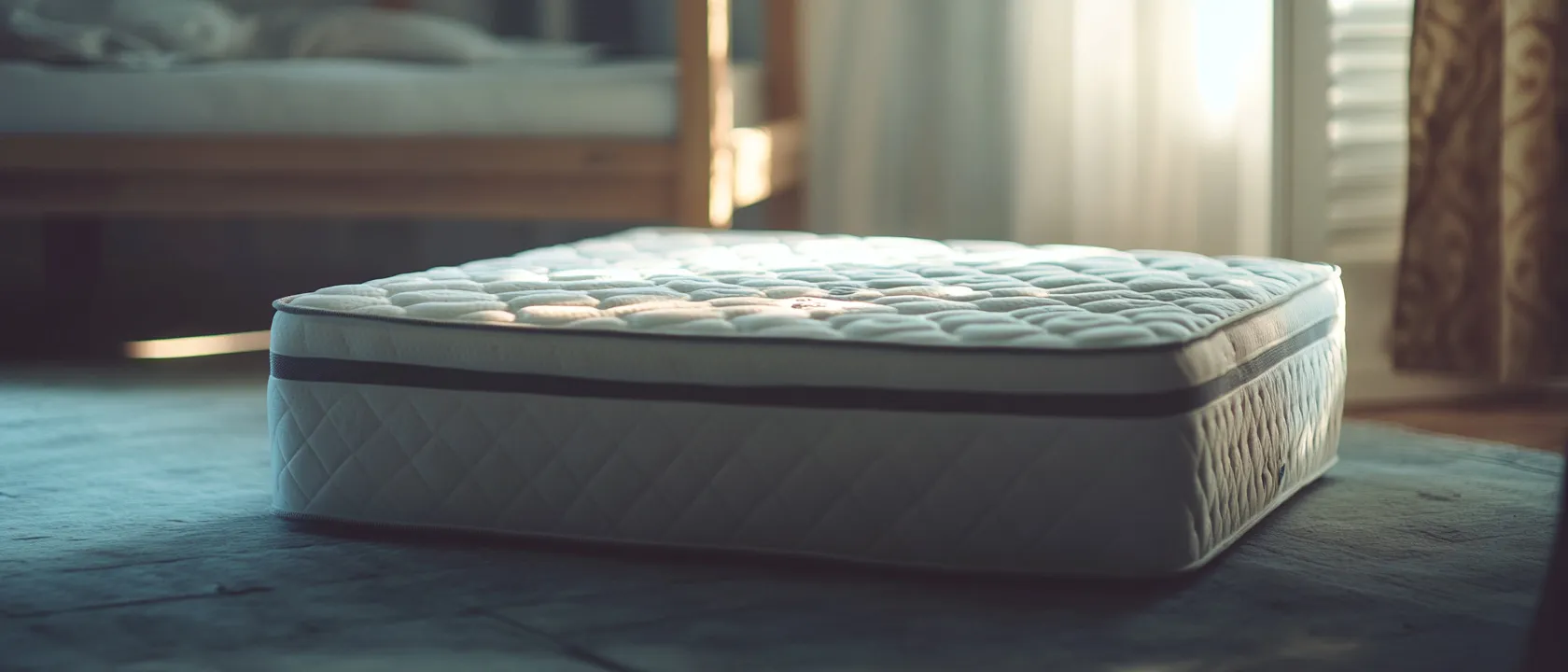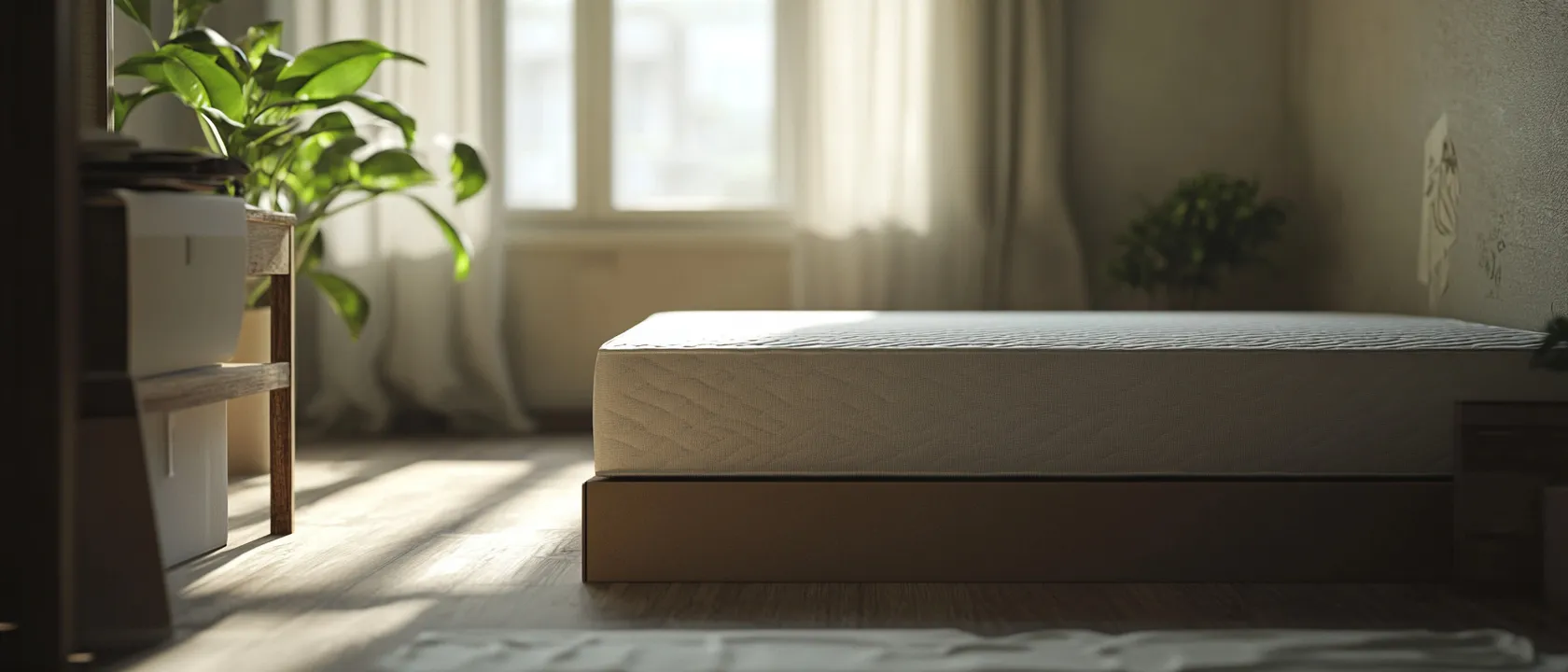The direct-to-consumer mattress revolution that began roughly a decade ago fundamentally transformed how we shop for and purchase one of our most important home investments. Pioneered by companies like Casper, Tuft & Needle, and Purple, the mattress-in-a-box concept promised to eliminate confusing showroom experiences, slash inflated retail markups, and deliver quality sleep products directly to consumers’ doors in remarkably compact packages. With clever marketing, generous trial periods, and disruptive pricing models, these brands quickly captured significant market share from traditional mattress retailers.
But the most critical question about these compressed mattresses has always extended beyond the unboxing experience and initial comfort impressions: how well do these mattresses actually perform over years of nightly use? Now that many of the pioneering brands have been on the market for five years or more, we have sufficient data from long-term owners to evaluate their durability claims, analyze how different materials and constructions have weathered regular use, and determine which brands have truly delivered on their promises of revolutionizing mattress value and longevity.
This comprehensive analysis examines long-term performance data from customer reviews, warranty claim patterns, material engineering assessments, and independent durability testing to determine which mattress-in-a-box brands have stood the test of time—and which have fallen short of their ambitious promises.
Understanding Mattress Durability: What Determines Longevity
Before evaluating specific brands, it’s essential to understand the key technical factors that determine how well any mattress maintains its comfort and support characteristics over time.
Foam Density: The Primary Predictor of Durability
For the foam layers used in most mattress-in-a-box products, density serves as the most reliable indicator of long-term performance:
- Memory foam durability correlates directly with density, measured in pounds per cubic foot (PCF):
- Budget-quality: 3.0 PCF or lower
- Medium-quality: 3.1-4.0 PCF
- High-quality: 4.1-5.0 PCF
- Premium-quality: Above 5.0 PCF
- Polyfoam (used in support layers) requires different density benchmarks:
- Low-quality: Below 1.5 PCF
- Medium-quality: 1.5-1.7 PCF
- High-quality: 1.8-2.0 PCF
- Ultra-high-quality: Above 2.0 PCF
Higher-density foams generally maintain their resilience longer, resist body impressions better, and provide more consistent support throughout their lifespan. However, they also typically cost more and may feel firmer initially.
Material Diversification and Hybrid Designs
The composition and arrangement of materials significantly impact longevity:
- All-foam constructions typically show more pronounced wear patterns in areas of concentrated body weight.
- Hybrid designs that incorporate pocketed coils generally demonstrate better durability profiles due to the inherent resilience of steel springs.
- Latex components (either synthetic or natural) typically outperform conventional polyfoam in maintaining consistent support characteristics.
- Specialized materials (like Purple’s Hyper-Elastic Polymer or Tuft & Needle’s Adaptive Foam) have unique aging profiles that don’t necessarily follow conventional foam patterns.
Construction Techniques and Quality Control
Beyond raw materials, manufacturing methods significantly impact durability:
- Layer bonding techniques determine how well mattress components stay integrated over time.
- Edge support construction affects how perimeter areas maintain their shape after repeated sitting.
- Cover durability and elasticity influence how the mattress surface adapts to the materials beneath as they age.
- Quality control consistency varies significantly between manufacturers, with some maintaining tighter tolerances than others.

The Pioneer Brands: Long-Term Performance Analysis
The earliest entrants to the mattress-in-a-box category now provide the most comprehensive data for long-term evaluation.
Casper: Evolution Through Iteration
As perhaps the most recognized name in the category, Casper’s original all-foam mattress has undergone several iterations since its 2014 debut.
Materials and Construction Evolution:
The original Casper featured a relatively simple construction with moderate-density foams (memory foam around 3.5 PCF and support foam around 1.8 PCF). Subsequent generations have increased density specifications and added zoned support sections to address initial durability concerns.
Five-Year Performance Data:
Analysis of customer reviews from original Casper owners reveals a distinctive durability pattern that correlates with body weight. Owners under 150 pounds generally report satisfactory performance through 5+ years, while those over 200 pounds frequently note significant softening and impression formation between years 3-5.
The most common long-term issues include:
- Center softening in queen and king sizes used by couples
- Edge breakdown affecting usable surface area
- Gradual reduction in motion isolation as materials soften
Warranty Claim Patterns:
Casper’s warranty claim data shows relatively low claim rates for catastrophic failures but significant increases in “comfort-related” issues after the 3-year mark. The company has generally honored warranty claims for impressions exceeding their specified threshold (currently 1 inch), though some customers report challenges with documentation requirements.
Current Product Improvements:
The latest Casper models demonstrate meaningful improvements in durability benchmarks, with their hybrid options showing particularly promising initial longevity data compared to their all-foam predecessors.
Tuft & Needle: The Density Advantage
Tuft & Needle took a different approach from many competitors, using proprietary Adaptive Foam rather than memory foam in their original design.
Materials and Construction Approach:
From their launch, Tuft & Needle emphasized higher-density polyfoam formulations (around 2.8-3.0 PCF) compared to budget competitors. This material choice appears to have provided durability advantages despite their aggressive pricing strategy.
Five-Year Performance Data:
Long-term owners report notably consistent support retention compared to similarly priced competitors. The absence of memory foam in the original design eliminated some common issues with material degradation, though some users note gradual firmness changes:
- Modest softening throughout the surface rather than localized impressions
- Minimal edge deterioration compared to memory foam alternatives
- Gradual reduction in cooling properties as the cell structure changes over time
Warranty Claim Patterns:
Tuft & Needle shows significantly lower warranty claim rates than the industry average, particularly for structural issues and material splitting. Their straightforward approach to honoring claims for qualifying impressions has contributed to their strong customer satisfaction ratings even among long-term owners.
Current Product Expansions:
Their expanded product line now includes hybrid models and higher-end offerings with enhanced durability expectations, though these newer products lack sufficient history for definitive long-term assessment.
Purple: Proprietary Material Performance
Purple’s innovative Hyper-Elastic Polymer grid represented the most significant material departure in the early mattress-in-a-box market.
Distinctive Material Properties:
The polymer grid’s fundamentally different structure creates unique aging characteristics compared to foam-based alternatives. The grid maintains its shape through mechanical properties rather than cellular structure, resulting in different wear patterns.
Five-Year Performance Results:
Long-term Purple owners report remarkable consistency in support characteristics compared to foam-based alternatives. The grid material shows minimal compression set (permanent deformation) even after years of use, though other aspects of the mattress show more typical wear:
- The polymer grid itself maintains its resilience exceptionally well
- Support foam layers underneath the grid show normal compression patterns
- Cover materials tend to show more stretching and wear than the internal components
Warranty Experience:
Purple’s warranty claims typically involve issues with the foam support layers rather than the grid itself, which tends to outlast other mattress components. Their warranty service receives above-average ratings from consumers, though some note lengthy processing times for claims.
Evolving Product Line:
Purple’s expanded offerings with thicker grid sections and improved support systems address the most common durability issues identified in their original model, though at significantly higher price points.

The Second Wave: Mid-Term Performance Insights
Several brands that entered the market slightly after the pioneers now have sufficient history to evaluate their mid-term durability.
Nectar: The Warranty Leader
Nectar disrupted the category with an unprecedented “Forever Warranty” and 365-night trial period.
Construction Approach:
Nectar uses multiple memory foam layers (3.0-3.5 PCF) over a higher-density support core, positioning their product in the medium-quality range for material specifications.
3-5 Year Performance Data:
Nectar mattresses demonstrate durability consistent with their moderate density specifications – better than budget options but showing predictable wear patterns after 3+ years:
- Progressive softening of comfort layers at a rate typical for their density class
- More pronounced body impressions for sleepers over 200 pounds
- Relatively good edge support retention compared to similar all-foam designs
Warranty Implementation:
Despite their “Forever Warranty” marketing, real-world implementation shows mixed results. While Nectar does honor claims for qualifying defects, the documentation and proof requirements become increasingly stringent for older mattresses, creating practical limitations to the theoretical lifetime coverage.
Leesa: The Premium Foam Approach
Leesa positioned itself as a more premium alternative with higher-quality materials than some competitors.
Material Quality Emphasis:
Leesa’s original mattress featured higher density memory foam (4.0 PCF) than many competitors, suggesting better potential longevity.
Observed Durability Outcomes:
After 3-5 years, Leesa owners report better-than-average impression resistance but typical foam softening. The higher-quality materials appear to delay but not eliminate the common foam mattress aging process:
- More gradual development of sleep impressions
- Better edge support retention than lower-density competitors
- Natural softening of foam that alters the feel but maintains functional support
Hybrid Performance Advantage:
Leesa’s later hybrid models show significantly better durability metrics in early data, suggesting a potential 7-10 year functional lifespan that more closely matches traditional premium mattresses.
Material-Specific Longevity: How Different Constructions Age
By examining performance data across brands, clear patterns emerge regarding how specific materials and constructions withstand extended use.
All-Foam Constructions: Predictable Patterns
The all-foam mattresses that dominated early mattress-in-a-box offerings show the most consistent aging patterns:
- Budget-oriented models (using 3.0 PCF memory foam or lower) typically show significant body impressions and comfort layer compression by year 3, with accelerated degradation thereafter.
- Medium-quality designs (3.0-4.0 PCF memory foam) generally maintain satisfactory support for average-weight users through years 3-5, with performance declining more noticeably in years 5-7.
- Premium all-foam models (using 4.0+ PCF memory foam and 1.8+ PCF support foam) demonstrate the best longevity, with acceptable performance often extending to years 7-10 for many users.
Across density classes, heavier individuals (200+ pounds) typically experience approximately 30-40% faster material degradation compared to those under 150 pounds, creating significant variation in user satisfaction over time even with identical products.
Hybrid Designs: The Durability Advantage
Hybrid mattresses incorporating pocketed coils consistently outperform all-foam alternatives in long-term testing:
- The inherent resilience of steel springs maintains support characteristics more effectively than foam-only support cores.
- Impression depth typically measures 20-30% less in hybrid designs compared to similarly priced all-foam alternatives after 5 years of equivalent use.
- Edge support deterioration occurs more gradually in reinforced hybrid designs, maintaining more consistent usable surface area throughout the mattress lifespan.
The durability advantage of hybrids appears most pronounced for heavier individuals and couples, where the additional structural support prevents the accelerated breakdown common in all-foam designs under higher weight loads.
Specialty Materials: Mixed Long-Term Results
Proprietary and specialty materials show more variable aging patterns:
- Latex components (both natural and synthetic) demonstrate the best overall durability, typically retaining 90%+ of their initial support characteristics even after 5+ years of use.
- Purple’s Hyper-Elastic Polymer grid shows excellent compression resistance but may experience some firming as the material ages, particularly in colder environments where the polymer becomes less flexible.
- Copper-infused foams (used by brands like Layla) show no significant durability advantage over standard foams of equivalent density, despite marketing claims suggesting improved longevity.
- Gel-infused foams demonstrate the same compression and impression vulnerability as their non-gel counterparts, with the cooling benefits diminishing faster than the structural integrity.
Price-to-Longevity Correlation: Value Analysis
Perhaps the most practical question for consumers is whether the direct-to-consumer models deliver better value over time compared to traditional retail options.
Budget Segment ($500-800 Queen)
In the entry-level price category, mattress-in-a-box brands demonstrate a complex value proposition:
- Short-term value (1-3 years) strongly favors direct-to-consumer brands, which offer significantly better initial comfort and support than similarly priced retail options.
- Medium-term value (3-5 years) shows roughly equivalent performance between better direct-to-consumer options (like Tuft & Needle) and traditional retail mattresses at similar price points.
- Long-term value (5+ years) typically favors traditional retail models with simpler, more durable constructions over the more complex but less durable budget direct-to-consumer options.
The data suggests that budget-conscious consumers replace mattresses every 3-5 years regardless of type, making initial cost the dominant factor rather than theoretical longevity.
Mid-Range Segment ($800-1,200 Queen)
In the middle market segment, direct-to-consumer brands generally demonstrate stronger value propositions:
- Higher material quality specifications for the price compared to retail equivalents
- More sophisticated design features that maintain comfort characteristics longer
- Performance comparable to retail mattresses costing 30-50% more
Brands like Brooklyn Bedding, Leesa, and Winkbeds in this segment demonstrate particularly strong price-to-longevity ratios, with expected usable lifespans of 6-8 years for average users—approaching traditional premium mattress durability at substantially lower price points.
Premium Segment ($1,200+ Queen)
At higher price points, the value advantage of direct-to-consumer brands becomes more variable:
- Premium hybrid models from brands like Saatva, Helix Luxe, and WinkBed demonstrate durability metrics comparable to traditional luxury brands while maintaining significant price advantages.
- High-end specialty offerings (like Purple’s premium models or Tempurpedic’s online offerings) show less dramatic price advantages but may offer unique comfort characteristics unavailable in traditional retail.
The data suggests that the greatest value sweet spot exists in the $1,000-1,500 range for direct-to-consumer hybrid models, which frequently match the 8-10 year performance profile of retail mattresses costing $2,000-3,000.
Consumer Satisfaction Trajectories: How Opinions Change Over Time
Perhaps most revealing is how owner satisfaction evolves over the lifetime of these mattresses.
The Honeymoon Period vs. Long-Term Reality
Analysis of review data shows a clear pattern across most brands:
- Initial reviews (0-6 months) skew overwhelmingly positive across nearly all brands, reflecting the improvement over older, worn-out mattresses and the novelty of the unboxing experience.
- Mid-term reviews (1-2 years) remain generally positive but show increased mentions of minor issues like slight softening or reduced cooling properties.
- Long-term reviews (3+ years) demonstrate much greater variance, with satisfaction strongly correlating with material quality rather than initial comfort or brand reputation.
This trajectory explains why many mattress-in-a-box brands maintain high average review scores despite variable long-term performance—the volume of new reviews from satisfied recent purchasers statistically overwhelms the smaller number of longer-term ownership experiences.
Body Weight and Sleeping Position: The Personalization Factor
Long-term satisfaction correlates strongly with how well the mattress matches individual physical characteristics:
- Side sleepers under 170 pounds report the highest long-term satisfaction across most foam-based brands, as their lower pressure profile causes less material compression over time.
- Back and stomach sleepers over 200 pounds experience the most significant satisfaction decline with all-foam models, as support degradation affects their comfort more directly.
- Combination sleepers generally note increasing motion transfer and reduced ease of movement as the most common comfort issues developing over time, even when support remains adequate.
These patterns underscore why universal comfort claims have proven problematic—the same material degradation that merely softens a mattress for a lighter side sleeper can render it functionally inadequate for a heavier back sleeper.

Conclusion: The Brands That Truly Deliver Long-Term Value
After comprehensive evaluation of long-term performance data, several clear patterns emerge regarding which mattress-in-a-box brands have genuinely delivered on their promises of revolutionizing mattress value.
The Durability Leaders
Several brands have distinguished themselves with notably superior long-term performance:
Tuft & Needle has maintained its position as a value leader, with their straightforward, dense foam construction aging more gracefully than many more complex alternatives. Their commitment to material quality over marketing features has resulted in exceptional durability-to-price ratios, particularly in their mid-range models.
Brooklyn Bedding leverages their status as one of the few direct-to-consumer brands that owns their manufacturing facility to deliver higher material specifications at competitive prices. Their hybrid models consistently demonstrate impressive longevity, with users reporting minimal deterioration even after 5+ years of regular use.
Purple has validated their unique material approach with the grid technology demonstrating remarkable resilience over time. While their mattresses change in feel somewhat as the supporting foams age, the grid itself maintains its functional properties exceptionally well, justifying the premium price for those who connect with its distinctive feel.
The Disappointing Performers
Some brands have shown more concerning long-term patterns:
Several budget-focused newcomers using 2.5-3.0 PCF memory foams over 1.5 PCF support cores demonstrate rapid deterioration, with significant impressions and support loss often appearing before the 3-year mark. These products may offer good initial value but ultimately require more frequent replacement.
Certain heavily marketed mid-range brands using traditional memory foam constructions show performance inconsistent with their premium positioning and price points. The gap between marketing claims and real-world durability has created significant consumer disappointment as these mattresses age.
The Evolving Landscape: Industry Adaptation
The most encouraging industry development has been the responsive innovation based on early durability feedback:
- Most major brands have introduced hybrid models that address the primary durability limitations of their original all-foam offerings.
- Material density specifications have generally increased across price points as brands compete on longevity rather than just initial comfort.
- Warranty terms have become more transparent and specific regarding impression depth and coverage limitations.
For consumers today, the mattress-in-a-box category offers significantly better long-term value than it did five years ago, with the best current options providing durability comparable to traditional premium mattresses at substantially lower prices.
The direct-to-consumer revolution has ultimately delivered on much of its promise, forcing traditional manufacturers to become more transparent and competitive while improving their own quality standards to meet rising consumer expectations. The winners in this evolution are consumers, who now have access to better mattresses at lower prices with more transparent information about what they’re buying—regardless of whether it arrives compressed in a box or through a conventional retail channel.







